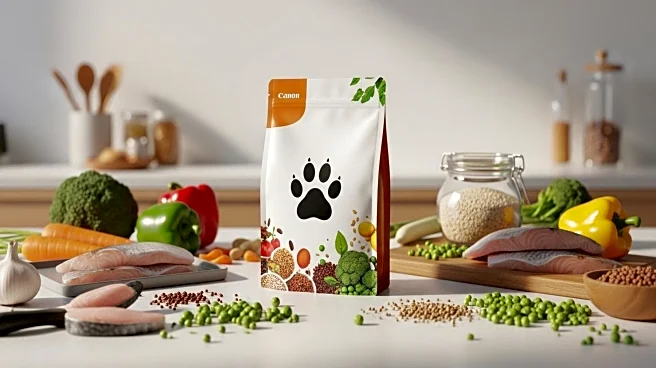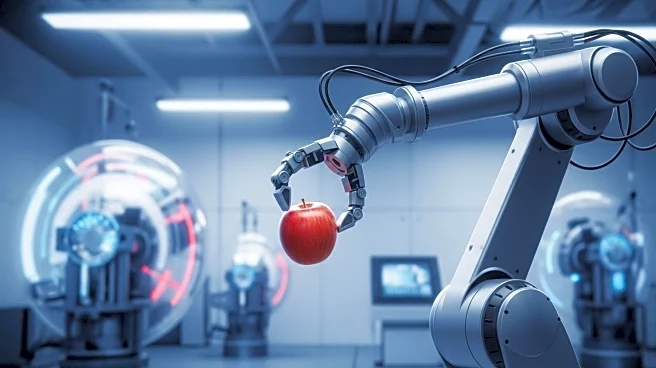What is the story about?
What's Happening?
In the competitive pet food industry, premium brands are increasingly turning to human food-grade manufacturing environments to differentiate their products. These facilities, originally designed to meet U.S. Food & Drug Administration and U.S. Department of Agriculture standards for human food, offer a unique selling point by ensuring high-quality processing for pet food. However, not all co-manufacturers in the pet food sector operate at this level, and transitioning to such facilities involves significant regulatory, operational, and cost considerations. The choice of a co-manufacturer is crucial, as it affects a brand's agility, quality, and reputation. Brands must carefully vet potential partners to ensure alignment with their product types and strategic goals.
Why It's Important?
The shift towards human-grade manufacturing in pet food production reflects a broader trend of increasing consumer demand for higher quality and safer pet products. This move can enhance a brand's market position by appealing to premium consumers who prioritize quality and safety. However, it also presents challenges, particularly for smaller brands, due to the higher costs and regulatory hurdles involved. Successful partnerships with co-manufacturers can lead to improved product quality and brand reputation, while poor choices can result in operational setbacks and financial strain. The trend underscores the importance of strategic partnerships in maintaining competitive advantage in the pet food industry.
What's Next?
As more pet food brands consider transitioning to human-grade manufacturing, the industry may see increased investment in upgrading facilities and processes to meet these standards. Brands will need to navigate the complexities of regulatory compliance and operational adjustments. Additionally, the demand for co-manufacturers capable of providing human-grade processing is likely to grow, potentially leading to increased competition among manufacturers to attract premium pet food brands. Brands that successfully adapt to these changes may gain a significant competitive edge in the market.
Beyond the Headlines
The trend towards human-grade manufacturing in pet food production raises ethical and cultural considerations about the treatment and care of pets. It reflects a growing societal recognition of pets as family members deserving of high-quality nutrition. This shift may also influence consumer expectations across other pet-related industries, potentially driving broader changes in how pet products are developed and marketed.
AI Generated Content
Do you find this article useful?













